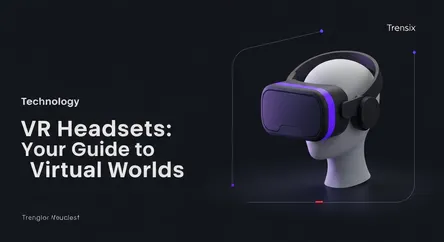Technology
VR Headsets: Your Guide to Virtual Worlds

Explore what Virtual Reality (VR) headsets are, why they are trending, and how this immersive technology is reshaping gaming, work, and communication.
What is it?
A Virtual Reality (VR) headset is a head-mounted device that provides an immersive, three-dimensional experience by replacing a user's natural environment with virtual content. It typically consists of a stereoscopic display (providing a separate image for each eye), stereo sound, and head-motion tracking sensors. These sensors, which include gyroscopes and accelerometers, track the user's head movements in real-time, allowing them to look around the virtual world as they would in the real one. Hand-held controllers often accompany the headset to enable interaction with virtual objects, completing the sense of presence in the digital space.
Why is it trending?
VR headsets are trending due to a combination of technological advancements and expanding applications. Hardware has become more powerful, affordable, and accessible, with standalone wireless headsets removing the need for an expensive PC. The gaming industry has been a major driver, offering deeply immersive experiences unavailable on traditional platforms. Furthermore, the burgeoning interest in the 'metaverse'—a collective virtual shared space—has positioned VR as a key gateway technology for future social interaction, remote work, and entertainment, fueling investment and consumer curiosity.
How does it affect people?
VR technology is profoundly changing how people interact with digital content and each other. In entertainment, it offers unparalleled immersion in games and cinematic experiences. Professionally, it's a transformative tool for training simulations in fields like medicine and aviation, allowing for risk-free practice. It enables virtual tourism, collaborative design, and remote work meetings that feel more personal than video calls. For individuals, it can offer new forms of social connection, fitness routines, and even therapeutic applications for treating phobias and anxiety, fundamentally altering our approach to play, work, and well-being.